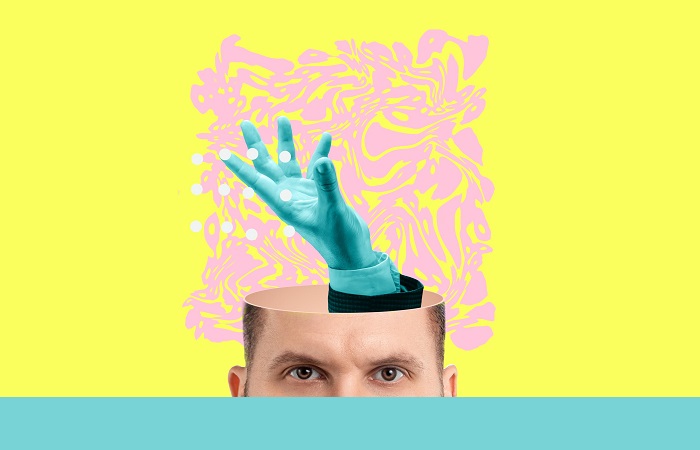
Table of Contents
Have you ever met someone who remembers everything with incredible detail and accuracy? They could recite a conversation word-for-word that took place years ago. Or effortlessly recall every detail of a complex diagram or map. These individuals may have a photographic memory, also referred to as an eidetic memory.
In this blog post, we’ll explore what it is like to have a photographic memory. We will explore if it’s real or not, how rare it is, and whether or not everyone can own and train ability. So buckle up and get ready to dive into the fascinating world of photographic and eidetic memory!
How does photographic memory work?
Photographic memory is the ability to see a photo or a page of text and automatically store it in short-term or long-term memory in great detail. A person having it can recall that image with perfect accuracy, and it lasts a lifetime. They can read a page of the dictionary word by word without any error; however, this never happens. On the other hand, eidetic memory is mainly visual and lasts up to 4 to 5 seconds.
The question is, in real life, how often does eidetic memory occur? Well, when it comes to eidetic memory, one group can reasonably claim to have it; that group is children. Research says up to 15% of children have an eidetic memory. This number shrinks when we start talking about adults. Most adults labeled as having an eidetic memory also use mnemonics and other memory devices alongside their enhanced natural abilities to help remember imagery.
Is photographic memory real?
The short answer is NO. Some people have perfect long-term memory, and they have them scientifically tested in a way that proves their abilities. But here’s a fun fact; according to this YouTube video, every year since 1993, there’s an event called The World Memory Championships. These people are masters of remembering things. However, none of the winners have ever claimed to have a photographic or eidetic memory. These two are often interchangeable but describe two different abilities. Some people have entered The World Memory Championships, claiming they have it, but none could take the prize home. First, I want to talk about the scientific version of photographic memory. Then, I will share a few stories of people who have come very close.
Most people associate a photographic memory is often actually eidetic memory. Eidetic memory is the ability to see an image only a few seconds after its removal and recall it very vividly. The image stays in a person’s mind without the help of any devices or other tools to help recall the details. However, this ability only lasts for a few seconds before the brain sends the essential parts of the image to shorter memory or disregards it.

Nobody has ever really had true photographic memories. However, there are two notable stories of people who have come very close.
Story 1
First, let’s talk about Elizabeth Stromeyer. Most stories of people with photographic memory come with very sketchy details. Take the story of Charles: Stromeyer III and his student, Elizabeth. Stromeyer was a Harvard scientist, and in 1970 he claimed that one of his students, Elizabeth, had a photographic memory.
It all started when Srtomeyer had Elizabeth look at an image of 10,000 dots. The next day, to ensure she had stored the dots in her long-term memory, he showed her another 10,000 dots. And when he takes these images of the 10,000 dots and places them together, they’re supposed to form a 3D image that makes sense; but only when both are together. This is commonly called Stereogram.
When Stromeyer showed Elizabeth the second image of the 10,000 dots, she could see the 3D image. This shows that she remembered the first 10,000 dots perfectly and laid them over on the second one she saw in her brain. Charles’ test made headlines, but something strange happened; he married Elizabeth. After marriage, they never participated in any further test of her memory. Although scientists have looked far and wide for a case similar to Elizabeth’s, it’s never been found.
Story 2
Secondly, let’s get on to Solomon Shereshevsky. Although marriages have tainted the reputation of Solomon, he has legitimacy as a man who could not forget over the years. Solomon Shereshevsky, also known simply as ‘Ш’ (‘Sh’), ‘S.’ became famous for his ability to remember long string numbers at a time. In the 1920s, S attended a work meeting and a co-worker told him off because he wasn’t taking notes. His co-worker was mad at him. Anyways, after the meeting, S recalled the entire speech of the meeting word by word. They say he had memorized complex math formulas and large poems in foreign languages since then. But the picture painted of S wasn’t entirely accurate. Therefore, while he was a phenomenal mnemonist, he had no photographic memory.
How rare is a photographic memory?
It is so rare that it’s kind of non-existent. According to research, a common agreement is that having a photographic memory does not exist. However, eidetic memory is accurate, and studies show it to be most common in children with a frequency of between 2 and 10 percent.
Can someone have a photographic memory?
According to New Scientist, even though many individuals claim to have a photographic memory, a real-life example in this sense does not exist. However, Highly Superior Autobiographical Memory is a condition that allows people to recall past events in detail, along with the exact dates when they occurred. Therefore, many people could mistake (HSAM) for photographic memory. Also, people working in different positions, like photographers for hire, may have sharp memories, but there’s no way that someone has a photographic memory.

How to know if you have a photographic memory?
Photographic memory is a rare ability that some people possess. People with this ability can recall images, sounds, or words in vivid detail after just one exposure to them. You can try recalling an image in your mind from memory and see how much detail you can remember. Anyone who can easily visualize every detail of the image with extreme clarity, might have this kind of memory. Additionally, being able to remember information without consciously trying to memorize it, such as recalling conversations word-for-word or recalling numbers from a long string of digits, could also be a sign of it. However, keep in mind that while some people may have exceptional memory skills, true photographic memory is extremely rare and does not exist until this day.
Can you train photographic memory?
No scientific evidence shows you can train your memory to become photographic. However, Healthline says lifestyle and dietary changes can improve your overall working memory.
- Regular exercise
- Mindfulness training
- Omega-3 fatty acids
- Mnemonic systems
- Learning a new language
- Mind games and puzzles
- Enough sleep
- Reading
- Language training (vocabulary, etc.)
How to know if you have a photographic memory?
Although many individuals can recall certain aspects of what they observe, individuals with a photographic memory claim to remember entire scenes with incredible detail permanently. Even after a brief glimpse at an image, they claim to be able to remember it permanently. On the other hand, since nothing has ever proven photographic memory to exist, some people may mistake it for other memorizing abilities.











Really informative and good anatomical structure of subject material, now that’s user genial (:.